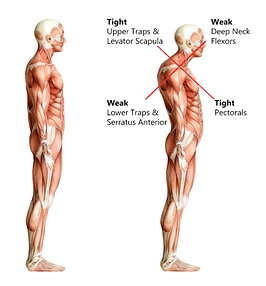
OLEKSIY GULENKO Massage Therapy

Fighting muscle stiffness at home
More people are in need of exercise at home during the time of social distancing, due to the COVID-19 virus. It is easy to get stuck at the desk and feel stiff at the end of the day.
I would like to remind basic rules to prevent muscle stiffness .
1. Check your posture every 30 minutes. Please set a 30 min timer and you will never miss it
Check if your shoulders are relaxed and the neck is not stiff.
2. Look to the ceiling for 20 seconds, look at your desk for 20 seconds moving the neck.
3. Do simple neck stretches holding each stretch for 30 seconds each side.
Acupressure with a Marker-MOVIE-
I am introducing the 3 effective points in this short movie.
Self Massage at Office-MOVIE-
Here are the movie of 3 Self massage techniques which you can do during the desk work.
Sitting at the desk.Proper posture.
A healthy sitting posture occurs when the body weight is evenly distributed on the seat, not twisted causing the least amount of musculoskeletal imbalance.
Backrests and armrests can also relieve spinal pressure but they should not be used continuously! That is why it is a good idea to try a core ball( exercise ball) to sit instead of a chair.
A desk and computer screen should be at a height, which allows the body to maintain its upright neutral positioning.
Feet are placed under the desk (Not under the chair!) Knees are bent at 90 to 110 degrees ( please use the steps or old Yellow Pages books to level your feet if needed).

Chairs and Hamstrings
Even with the perfect posture while sitting at the desk, the knees will be bent.Bent knees will cause the hamstrings to be short and tight without regular stretching and lengthening.
There are ways to stretch them without even standing up from the desk or leaving the office space.
Tight Shoulders and Pectoralis Stretch.
While upper back pain and tight shoulders are the most common complains for people who work at the desk , not many are aware of tight pectoralis muscles. Tight Pectoralis ( aka Pecs) are often the cause of tight shoulders.
The pectoralis Major muscle is a large muscle in the upper chest, fanning across the chest from the shoulder to the breastbone. The two pectoralis major muscles, commonly referred to as the 'pecs,' are the muscles that create the bulk of the chest.
A second pectoral muscle, the pectoralis Minor, lies beneath the pectoralis major.Massive Pectoralis Minor and Major pull the shoulders forward pulling and constantly loading the upper back muscles.

This picture explains the way pectoralis muscles pull upper back , neck and shoulders to the front adding extra tension to the body and bringing the body into a habit of bad posture.
Correction of the imbalance can be done with stretching.
More about Pectoralis muscles.
The pectorals are predominantly used to control the movement of the arm, with the contractions of the pectoralis major pulling on the humerus to create lateral, vertical, or rotational motion. The pectorals also play a part in deep inhalation, pulling the ribcage to create room for the lungs to expand.
Injuries to the pectoralis major can occur during weightlifting, as well as other bodybuilding exercises that place excessive strain on the shoulders and chest.
Pectoralis Major

Pectoralis Minor